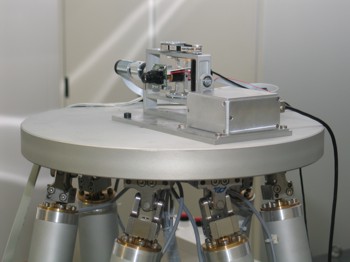Researchers of the Institute of Applied Mechanics work together with the Institute of Real-Time Computer Systems and the Bernstein Center for Computational Neuroscience of the Ludwig-Maximilian-University Munich in the Research Cooperation for Bioanalogical Assistant Systems (FORBIAS). The aim is to technically imitate what is called the vestibule-ocular reflex in biology. This reflex enables human beings to get a static impression of the environment although head and body may be in motion
In one sub-project of the research cooperation, an inertial measurement unit inspired by the human vestibular organ is developed. The sensor captures motion in all 6 degrees-of-freedom of translation and rotation. In an intelligent algorithm, these signals are fused for the derivation of orientation in space. By using the feedback of image processing, equivalent to the human eye and the visual cortex, the sensor is calibrated online. Adaptive approaches of interference cancellation in combination with modern decorrelation control lead to excellent results.
In a further sub-project systems are being developed that move the gaze direction of cameras. These systems serve to compensate for motions measured by the inertial measurement unit in order to realize technical gaze stabilization. The actuator system has to be capable of reaching dynamic properties comparable to the human oculomotoric system. The development of extremely fast motion devices as described above requires the analysis of existing systems as well as mechanical examinations and control optimization. Besides simulations of certain interesting subareas of the system hardware experiments are being performed using real-time digital signal processing.
Thus performance characteristics as well as different specific effects can be investigated.
Camera motion devices can be used in many different applications. A wearable head camera system that looks where the user looks is one example. Here a video-oculograph systems track the user’s eye motions and send motion commands to the actuators which align the camera parallel to the user’s current gaze direction. A system like that can be used for the recording of special film sequences or for documentation purposes, for example during surgery.
A camera stabilized by an inertial measurement unit is a base for driver assistance systems based on image processing or to support pilotes during the landing approach of aircrafts or helicopters.

